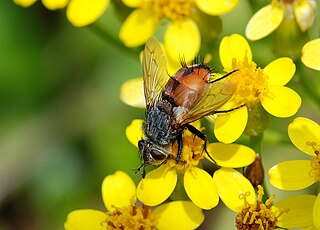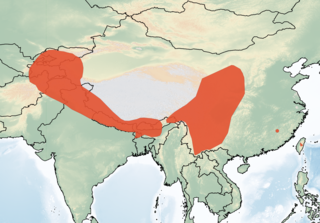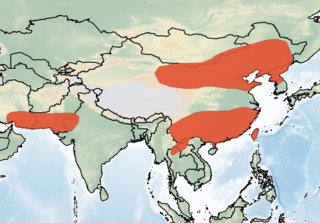
The Integrated Taxonomic Information System (ITIS) is an American partnership of federal agencies designed to provide consistent and reliable information on the taxonomy of biological species. ITIS was originally formed in 1996 as an interagency group within the US federal government, involving several US federal agencies, and has now become an international body, with Canadian and Mexican government agencies participating. The database draws from a large community of taxonomic experts. Primary content staff are housed at the Smithsonian National Museum of Natural History and IT services are provided by a US Geological Survey facility in Denver. The primary focus of ITIS is North American species, but many biological groups exist worldwide and ITIS collaborates with other agencies to increase its global coverage.

The Brachycera are a suborder of the order Diptera. It is a major suborder consisting of around 120 families. Their most distinguishing characteristic is reduced antenna segmentation.

The fraternal myotis is a species of vesper bat native to East Asia.

The Burmese whiskered myotis or Burmese whiskered bat is a species of vesper bat. It is found in China, India, Myanmar, Laos, and Vietnam.
The Guadalcanal rat is a species of rodent in the family Muridae. It was found only in the Solomon Islands. Since this species was collected between 1886 and 1888 it has not been seen again. It is possibly extinct.
Manongarivo Reserve is a wildlife reserve in the North-West of Madagascar in the region of Diana.
Dolichancistrus is a genus of suckermouth armored catfishes native to South America.

The eastern barbastelle or Asian barbastelle is a species of vesper bat found throughout much of Asia, from Afghanistan to Taiwan.

The Oriental serotine is a species of bat in the family Vespertilionidae. It is widespread and found throughout Asia.

The Socotran pipistrelle or Lanza's pipistrelle is an endangered species of vesper bat in the family Vespertilionidae. It is endemic to Socotra Island in Yemen, and is the only mammal thought to be endemic to the island.
Ognev's serotine is a species of vesper bat found in western and central Asia.
Kozlov's long-eared bat is a species of vesper bat in the family Vespertilionidae. It is found in southern Mongolia and adjacent parts of China.
Strelkov's long-eared bat is a species of vesper bat found in mountainous regions of Central Asia.
Ward's long-eared bat is a species of vesper bat in the family Vespertilionidae. It is found in mountainous regions of South Asia and adjoining regions.
Dolichancistrus atratoensis is a species of catfish in the family Loricariidae. It is native to South America, where it occurs in the Atrato River basin in Colombia. The species reaches 8.2 cm SL and reportedly inhabits high-altitude environments.
Dolichancistrus carnegiei is a species of catfish in the family Loricariidae. It is native to South America, where it occurs in the Magdalena River basin in Colombia. The species reaches 17 cm in total length.
Dolichancistrus fuesslii is a species of catfish in the family Loricariidae. It is a freshwater fish native to South America, where it is known only from Colombia. The species reaches 13.1 cm in total length.
Dolichancistrus pediculatus is a species of catfish in the family Loricariidae. It is a freshwater fish native to South America, where it occurs in the Meta River basin in Colombia. The species reaches 12 cm in total length.
Dolichancistrus setosus is a species of catfish in the family Loricariidae. It is a freshwater fish native to South America, where it occurs in the Andes of Colombia. The species reaches 12 cm in total length and inhabits high-altitude areas. FishBase notes that the river basin that the species is native to is currently unknown, presumably because it was not originally recorded when the species was described.
Eoscansor is a species of small varanopid amniote that lives from the upper Pennsylvanian subperiod in northern New Mexico, United States 305 million years ago. The species Eoscansor cobrensis was 24.5 centimeters long and weighed 58.3 grams. The tetrapods teeth indicated that it was insectivorous. The small size and grasping limbs means that was E. cobrensis highly agile and likely arboreal. The name Eoscansor means "dawn climber", derived from Greek with "Eo" meaning dawn and "scansor" meaning climber. E. cobrensis is currently the oldest specialised climbing tetrapod animal pushing back the original record by 15 million years. The species was discovered in the El Cobre Canyon Formation in northern New Mexico near the village of Chama in 2005 but was not prepared until 2015. The COVID-19 pandemic in 2020 pushed study back until 2022 where it was described as a new genus and species. Eoscansor fossil holotype is part of the New Mexico Museum of Natural History and Science (NMMNHS) collection.






